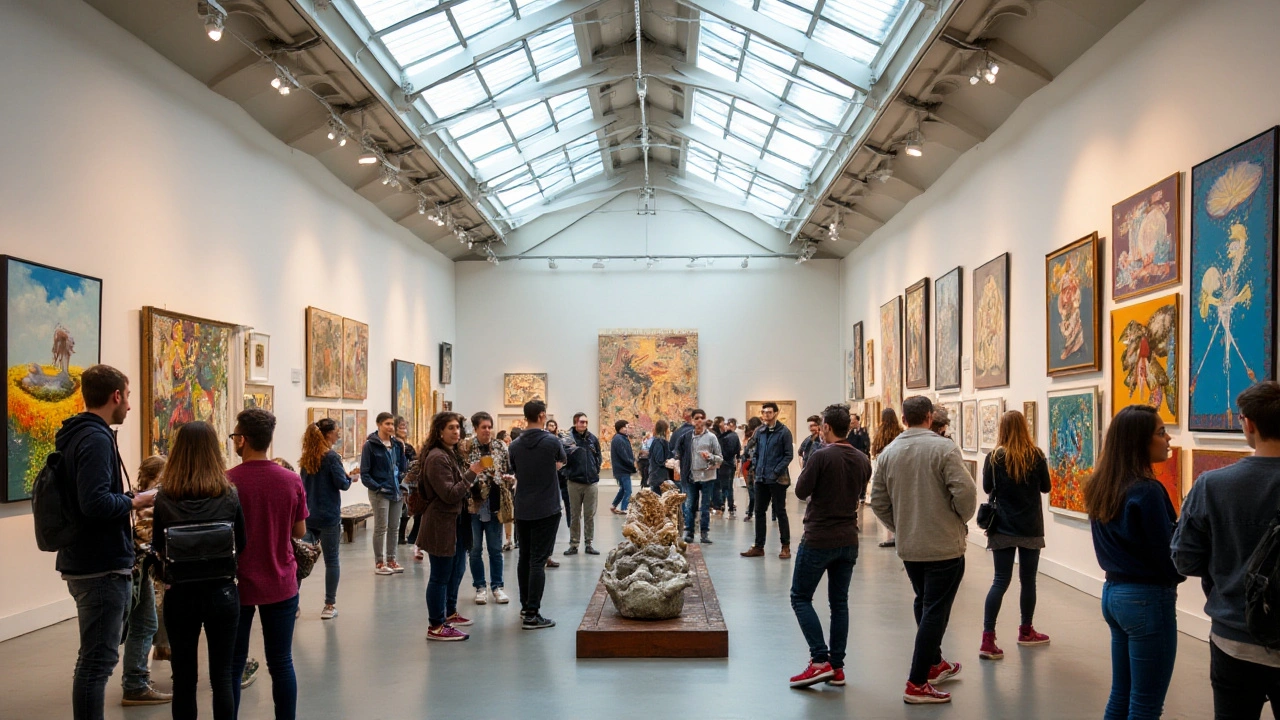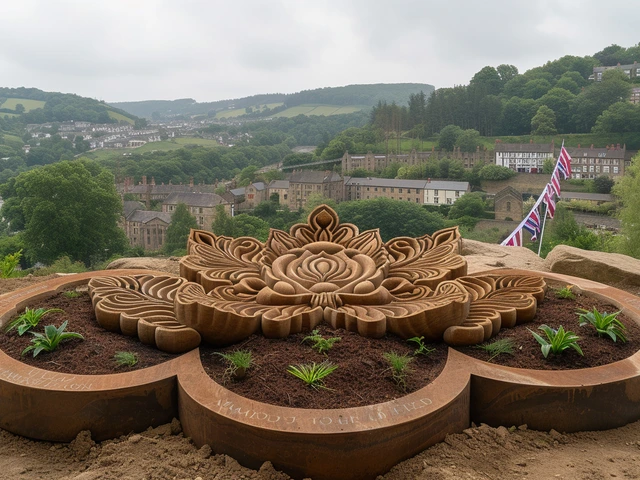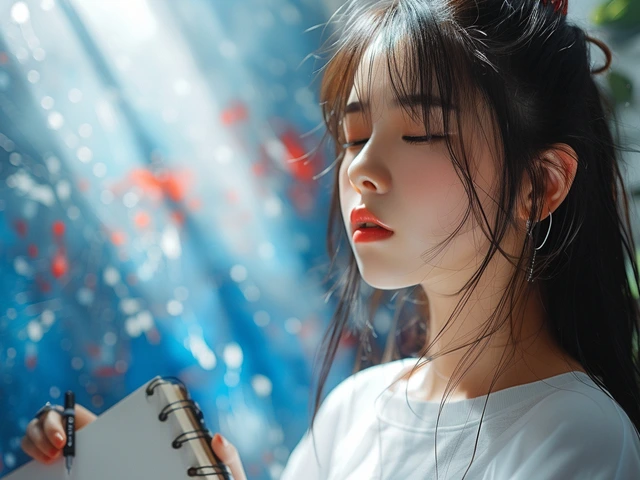Contemporary art is a fascinating realm where creativity knows no bounds. Unlike traditional art forms bound by certain conventions, contemporary art thrives on diversity and experimentation. Every piece tells a story not just about the artist, but also about the world we inhabit.
Today, the art landscape is shaped by a plethora of influences, from technology to sociopolitical movements. Artists have the liberty to meld various materials, adopt new techniques, and tackle an array of themes. This dynamic field not only mirrors our times but often pushes us to question and evolve our perceptions.
- The Essence of Contemporary Art
- Key Trends and Movements
- Famous Contemporary Artists
- Engaging with Art Galleries
- The Role of Technology in Art
- Tips for Art Enthusiasts
The Essence of Contemporary Art
The vibrant world of contemporary art is a thrilling tapestry woven from innovation, tradition, and a deep curiosity about what art can be. At its core, contemporary art reflects the social, political, and economic conditions of the world around us. It reacts to culture and provides commentary on issues ranging from the environment to identity politics. This form of art continuously challenges and expands the boundaries established by its predecessors, an attribute that sets it apart. Unlike earlier eras driven by strict aesthetic guidelines, contemporary art thrives on its fluidity and inclusivity. It welcomes a plethora of styles, techniques, and materials, defying singular definitions and allowing for a global interchange of ideas and practices.
A key element of contemporary art is its relationship with technology. Artists today harness digital tools, robotics, and virtual reality, which has led to the emergence of exciting new genres like digital art and interactive installations. These innovations make art more accessible and transform how we experience it, allowing audiences to become participants rather than mere observers. Creative expression in contemporary art often involves collaboration across disciplines, showcasing a convergence of art with science, architecture, and literature. This interdisciplinary approach broadens the understanding and impact of art in society, sometimes blurring the lines between artist and viewer.
"Art disrupts, art seizes, art is action," notes Marina Abramović, a pioneer of performance art, encapsulating the fearlessness of contemporary creators.
The diversity seen in contemporary art also comes from its global nature. Artists from various backgrounds contribute unique perspectives shaped by cultural experiences and individual narratives. This diversity not only enriches the art world but also fosters dialogue and appreciation across different cultures. Furthermore, contemporary art offers a platform for underrepresented voices, challenging dominant narratives and encouraging inclusivity. This global dimension is not just visibly alive in artworks but also in major art events such as the Venice Biennale or the Saatchi Gallery exhibitions, which showcase a wide array of cultural expressions and artistic schools of thought.
One cannot ignore the influence of the market on contemporary art. Galleries, art fairs, and auction houses play significant roles in determining trends and artist prominence. The art market is a dynamic space where emerging talents meet seasoned collectors, making it a powerful force in shaping popular and critical reception of artworks. This monetary aspect sometimes sparks debate over the commercialization of art, yet it remains an undeniable part of contemporary practice. Artists today navigate the delicate balance between artistic integrity and market demands, a challenge as old as art itself but intensified in today's digital age.
The fluidity of contemporary art also encourages artists to engage with themes of impermanence and transformation. Works often reflect transient ideas and ephemeral moments, captured through installations and performances designed to exist temporarily. This challenges the traditional notion of art as a timeless relic, instead proposing an art form that is as changeable as the social contexts from which it emerges. This challenge is uniquely compelling and speaks to the adaptability and responsiveness required of modern creators. By exploring these elements, art enthusiasts can better appreciate the multifaceted essence of contemporary art, which continues to evolve and provoke thought in unprecedented ways.
Key Trends and Movements
The world of contemporary art is characterized by its dynamic nature, where new ideas and practices continually challenge traditional boundaries. There are several key trends and movements that have emerged in recent years, each contributing to the evolution of the art scene in unique ways. One notable trend is the increasing emphasis on sustainability, as artists explore themes of environmentalism and the impact of climate change on our world. This movement often sees the use of recycled or sustainable materials, highlighting the deep connection between art and ecological consciousness. Exhibitions focusing on these themes have grown in popularity, encouraging a dialogue on pressing environmental issues.
Another significant movement is the integration of technology in creating new forms of artistic expression. Digital art, augmented reality (AR), and virtual reality (VR) have given rise to a fresh wave of creativity, allowing artists to craft immersive experiences that transport audiences into new realms. This intersection of art and technology opens doors to possibilities previously unimaginable, granting both artists and viewers a more interactive engagement with the work. As technology continues to advance, so does its influence on the landscape of modern art.
"Art is not what you see, but what you make others see." - Edgar Degas
Social and political commentary remains a crucial aspect of contemporary art. Artists are increasingly using their works as platforms to address complex social issues such as identity, inequality, and human rights. This trend reflects art's role as a mirror to society, provoking thought and inspiring change in the viewers. These works often employ a narrative style, telling stories that resonate on personal and collective levels, thus engaging audiences in a deeper conversation about the world we live in.
The concept of globalism has also profoundly influenced contemporary art, with an enhanced focus on diversity and multicultural perspectives. As artists draw inspiration from different cultures and backgrounds, the richness of these diverse narratives contributes to a more inclusive art scene. This shift towards a global perspective is not just about representation, but also collaboration, fostering a spirit of cultural exchange and understanding that transcends borders.
Creative expression is breaking conventional barriers with the rise of performative and conceptual art. These forms emphasize the process and ideas behind the creation rather than the final product, challenging viewers to rethink their understanding of what art can be. Performative art, in particular, often engages directly with spectators, making them part of the narrative and blurring the lines between creator and audience. This participatory element underlines the evolving nature of contemporary art, where the experience is as significant as the creation itself.
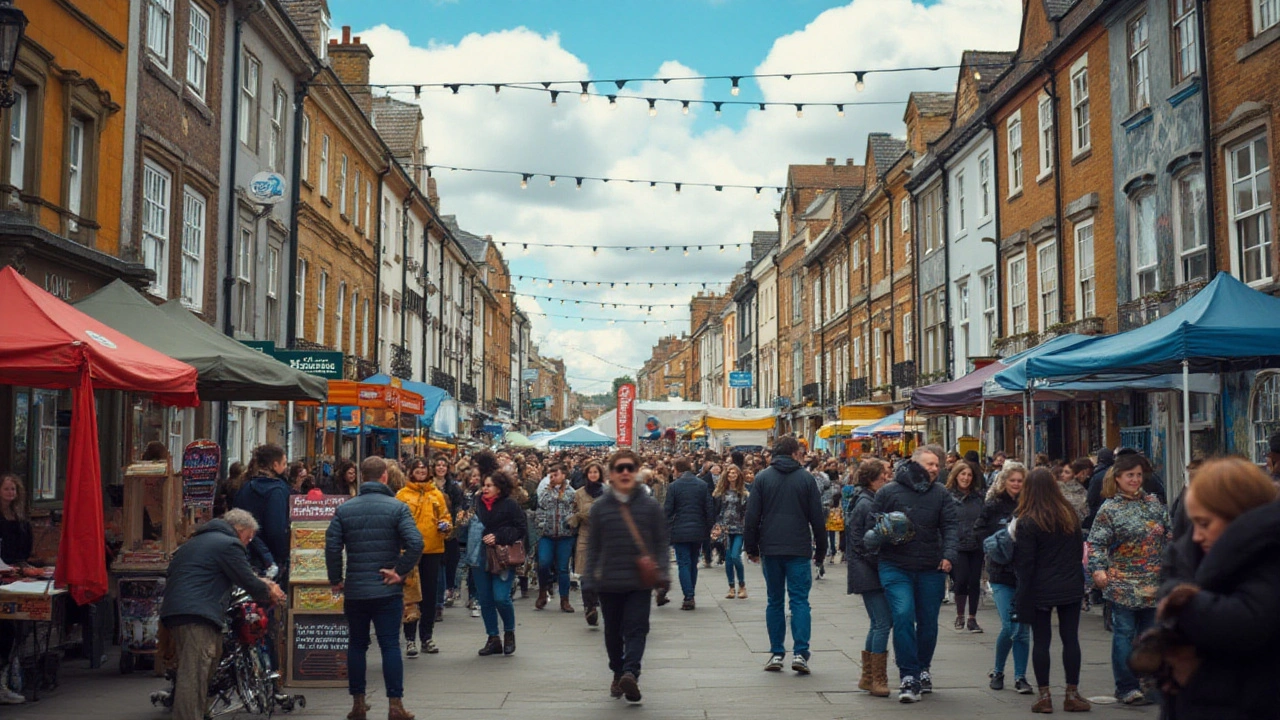
Famous Contemporary Artists
The world of contemporary art is a rich tapestry woven from the diverse expressions of many talented artists who capture the essence of our times. Among these creative minds, a few have significantly shaped the art scene with their groundbreaking work. One such figure is Yayoi Kusama, whose mesmerizing installations and obsession with polka dots have made her a household name. Kusama's work often explores themes of infinity and psychological trauma, drawing viewers into immersive experiences that blur the boundaries between art and life. Her installations, such as the Infinity Mirror Rooms, have captivated audiences worldwide, creating a dialogue about mental health through art.
Another notable contemporary artist is Ai Weiwei, whose work is as much social commentary as it is art. Weiwei fearlessly tackles issues of human rights and political oppression through mediums ranging from sculpture to photography, often engaging with his audience through digital platforms to promote activism. A fervent advocate for freedom of speech, Weiwei's art is a powerful tool for change. His piece "Remembering," which commemorates the 2008 Sichuan earthquake victims, startled audiences with its poignant storytelling through thousands of backpacks arranged on a Berlin museum's façade, delivering not just visual impact but also a deeper social message.
In the realm of digital and multimedia art, David Hockney stands out as an innovative force. Known for his colorful landscapes and exploration of perception, Hockney has embraced new technologies with enthusiasm. Early on, he experimented with iPad and iPhone drawings, bridging the gap between traditional art forms and digital manifestations. Hockney's ability to adapt and experiment keeps him relevant in the continuously evolving art scene. His work showcases that even established artists can evolve by embracing new mediums, challenging their creative boundaries while influencing emerging digital art forms.
Emerging talents like Njideka Akunyili Crosby bring their unique voices to the contemporary art dialogue by combining personal narratives with broader cultural experiences. Crosby's mixed media paintings offer a fusion of her Nigerian heritage with Western influences, challenging identity and cultural norms. By layering photographs, textiles, and paint, she creates depth in her portraits, which reflect her dual experiences and prompt viewers to reconsider their understanding of cultural identities. Her works often provoke thought on global perspectives and the blending of cultures in modern urban settings.
As diverse as they are talented, these artists reflect the plurality of contemporary art's trajectory. They redefine boundaries and invite conversations that resonate globally. In the words of Ai Weiwei, "Art is not an end, but a beginning."
"Art is not an end, but a beginning," - Ai Weiwei. This ethos underlines the role of contemporary artists in shaping discourse, making them critical players in art's evolving landscape.The modern art scene continues to evolve, fueled by these visionaries who, while rooted in individual expertise, share an unprecedented ability to reach and resonate with a broad audience.
Engaging with Art Galleries
Walking into an art gallery is like stepping into a world where time is fluid and boundaries are blurred. For those new to the contemporary art scene, galleries can feel intimidating. However, they are vital spaces for accessing and understanding the heartbeat of modern creativity. Each gallery visit offers a unique encounter with the unexpected, so it's essential to approach this experience with an open mind and a curious spirit. Start by letting yourself freely explore the rooms, pausing at pieces that capture your attention. Observe from different angles, and note how light, shadow, and surroundings affect each artwork. Engaging with art isn't about having all the answers; it's about cultivating your own perspective and allowing the art to speak to you.
Most established galleries specialize in specific art forms or movements. Researching the gallery's reputation and their featured artists can enhance your visit. Understanding the context behind the artworks enriches your experience and provides a deeper appreciation of the pieces. Don’t shy away from asking gallery staff questions; their insights can reveal nuanced stories behind the works. Often, engaging in conversation with other patrons can also provide new interpretations and insights. This dialogue can transform a solitary visit into a shared experience, connecting people through the lens of art.
Attending gallery openings is another compelling way to immerse yourself in art circles. These events, often held during evenings, serve as vibrant gatherings for artists, collectors, and enthusiasts. They provide an opportunity to witness new exhibitions firsthand and, in many cases, to hear directly from the artists. These gatherings emphasize the social aspect of art appreciation, offering a platform for engaging discussions about art's impact on society. „Art throws a question to the viewers; it is up to them to engage and find answers,” says acclaimed contemporary artist Yayoi Kusama. This statement underscores the personal journey that art invites us to embark upon.
In the digital age, galleries are also expanding their presence online. Many offer virtual tours and detailed online catalogs, making art more accessible than ever. These tools offer an alternative, but they are not substitutes for the visceral experience of viewing art in person. The texture, scale, and immediacy of artwork can only be truly appreciated through direct interaction. However, online resources do serve as excellent platforms for preliminary research, especially for those with limited access to major art cities.
Engagement also extends to purchasing art pieces. For those interested in collecting, galleries are often the first step in building a meaningful collection. It's important to interact with the gallerists and understand the valuation of works. Many galleries offer payment plans, making art collecting more accessible. Remember, collecting art is not just about investment; it is about building a personal connection with pieces that resonate with your life story and values.
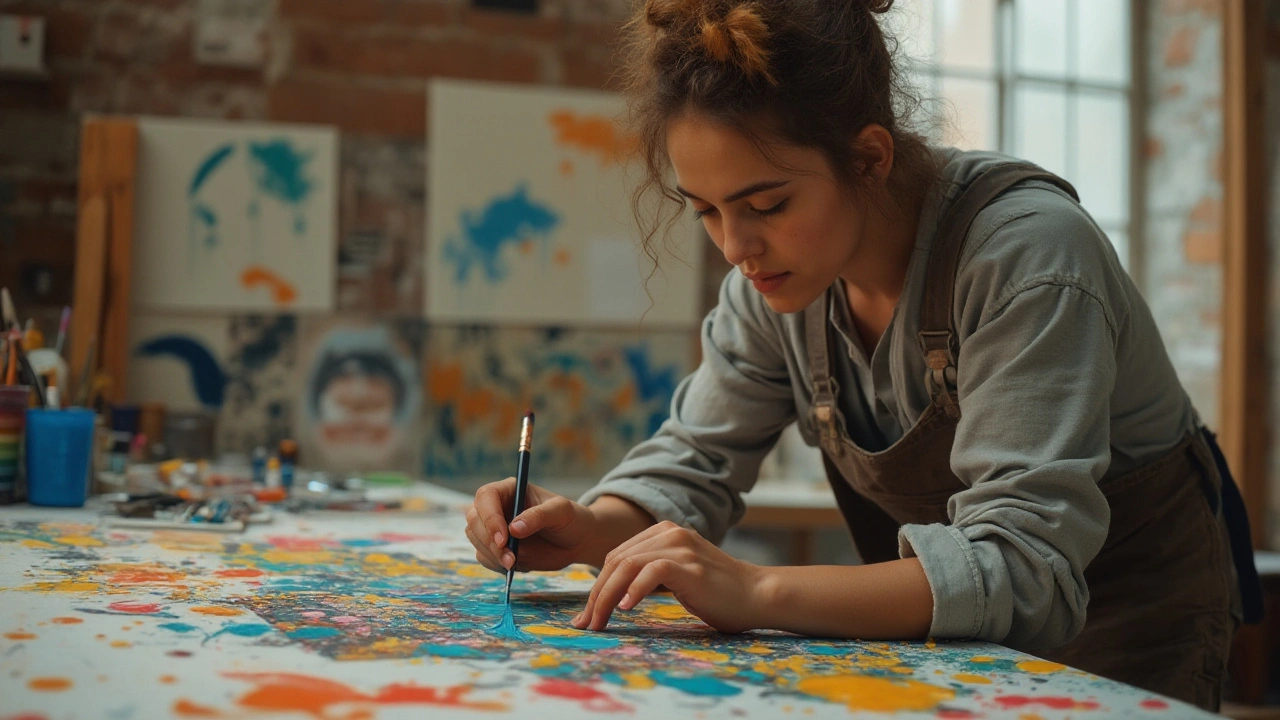
The Role of Technology in Art
In today's vibrant art scene, technology is not just a tool but a transformative force reshaping the boundaries of what is possible in contemporary art. Artists today find themselves at a crossroads where technology can augment or entirely redefine the creative process. Digital tools have expanded the artist’s palette, introducing new forms and mediums like digital painting, 3D modeling, virtual reality installations, and even AI-generated art. This infusion of tech has not only altered how art is created but also how it is experienced and interacted with by audiences. The rise of digital art platforms and online exhibitions democratizes the art world, making it accessible to a global audience from the comfort of one's home.
The marriage between technology and art isn't just about new tools; it's a philosophical shift. This intersection invites us to ponder the essence of creativity in the digital age. The traditional notion of an artist as the sole creator is challenged by collaborative AI programs that generate unique pieces based on set parameters, blurring the lines between artist and algorithm. Tools such as Adobe’s suite of products have become instrumental in this transition, allowing for intricate designs and complex compositions that were once unimaginable. Technology's role is also evident in the logistics of art; blockchain and NFTs (non-fungible tokens) have carved new paths in the art market, offering artists new ways to monetize their creations and protect their intellectual property.
"Technology is the campfire around which we tell our stories," observes musician Laurie Anderson, highlighting how art and technology together forge a new narrative.The importance of technology in art is heightened further by its ability to engage with issues relevant to our times, such as climate change, social justice, and identity. Through interactive installations and augmented reality experiences, these themes come alive, inviting participation and fostering community engagement. Consider the rise of interactive art exhibits where visitors are not mere observers but integral to the art piece itself, influencing outcomes, and thus creating a personalized experience.
Looking ahead, the fusion of art and technology promises even greater innovations. As artists continue to explore new frontiers, technologies like blockchain could ensure provenance and authenticity in a largely digital marketplace, while AI might offer new realms of digital aesthetics, challenging the essence of creative authorship. A speculative future might entail art that evolves on its own, driven by AI yet inspired by human input. Thus, the role of technology in art is not just about creating but is fundamentally about redefining engagement, creation, and dissemination in this dynamic landscape.
Tips for Art Enthusiasts
For those who are either new to the vibrant world of contemporary art or seasoned admirers looking to deepen their understanding, navigating the art scene can be as thrilling as it is educational. It's a journey that invites you to explore, interpret, and connect with diverse ideas and expressions. To make the most of this journey, consider some strategic approaches that could enhance your experience and appreciation. Firstly, always start with a plan. Whether visiting a local gallery or attending an international art fair, research the artists and exhibitions in advance. This preparation allows you to focus on areas of particular interest and enables you to engage more deeply with the work on display. Note any special installations or talks happening during your visit that might offer additional insights.
"Art enables us to find ourselves and lose ourselves at the same time." — Thomas Merton
Having a basic understanding of current art trends can significantly enrich your viewing experience. This involves staying updated with relevant art news sources, attending panels, or even subscribing to art magazines. By doing so, you'll be better equipped to appreciate subtle nuances in contemporary pieces, noting how various movements influence today's art landscape. Another effective approach is actively engaging with the artwork. Rather than merely observing a piece from afar, consider its context, technique, and the emotions it evokes. Take your time to read any accompanying plaques or interactive guides at exhibitions to gain further understanding. Many galleries have staff or curators available for discussion, do not hesitate to ask them questions.
Networking within the art community can provide invaluable insights and opportunities. Attending opening receptions or art talks is a fantastic way to meet artists, curators, and fellow enthusiasts. These interactions can lead to profound discussions and sometimes exclusive insights into the creative processes behind the works. As you delve deeper, consider investing in artwork, whether through purchases or supporting artists through exhibitions and projects. A growing interest in art trends often leads enthusiasts to start personal collections, reflecting their unique tastes and journey through the art world.
It’s also significant to acknowledge the increasing role of technology in art. Familiarizing yourself with digital art platforms, virtual reality exhibits, or even blockchain for art transactions can be an eye-opening aspect of modern art appreciation. These developments are reshaping how we interact with and value art today. Acknowledging these technological advancements can provide a fresh perspective and appreciation of creative expression in the contemporary scene.
Lastly, remember that engaging with art is very much a personal experience. Trust your instincts and reactions to the artwork, and let them guide your interests. Enjoy the beauty of discovering what resonates with you; it could be a particular style, era, or artist. The world of contemporary art is vast and ever-evolving, but these strategies can help you navigate it with confidence and a deeper connection.

